Today I welcome Jonathan Wong who has provided a GREAT guest article for us comparing the Olympus E-PL1 to the new Samsung NX10. Something I myself was VERY curious about. Thank you Jonathan!
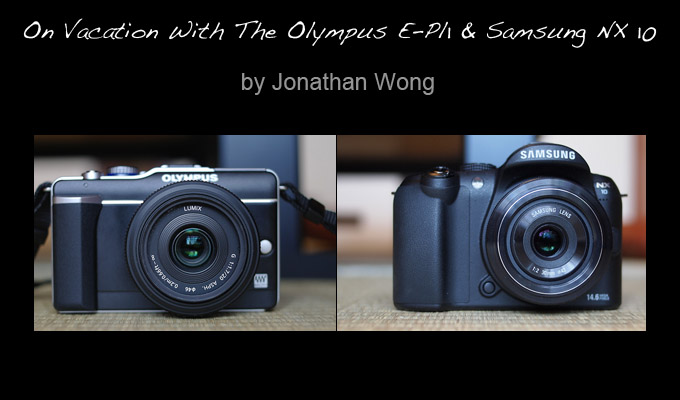
The Perfect Camera – On vacation with the Samsung NX10 and Olympus E-PL1
Hello, my name is Jonathan. I have a problem.
I admit it: I like to receive praise for my photos. Whether it be a friend commenting on a picture of my home-mangled dinner, or the bride and groom claiming that my photos are “better than the pro’s”. It’s feel-good, ego-boosting validation for taking the effort to put myself in the right place, at the right time and press the right buttons. But this is not my problem.
Rewind a little and at the other end of the photography timeline is the delightful “hunting and gathering” stage. Gear Acquisition Syndrome is half the thrill for many people; after all, who can honestly say they don’t get excited when the delivery status changes to “on-board with driver”? But again, this is not my problem.
In between GAS and praise lies the process of actually taking photos. And while this process was largely transparent with pro-SLR gear, there was no stopping the inevitable arm/back aches, weird stares as I repeatedly hauled 3kg of metal and glass up to my eye, and most of all, being asked at every shoot “hey man that’s a nice camera, send me your photos later ok?”
So no more than a week after my last shoot (a wedding, no less) I waved goodbye to my SLR kit, and left myself with the task of finding something smaller, something more inconspicuous, but also something good. Since this was November 2009, the solution seemed obvious: the Panasonic GF1 with the 20mm f/1.7 pancake lens. An SLR-sized sensor in a highly portable package with a fast lens? Brilliant!
Exactly 2 weeks later, I’m back in the shop returning the GF1, simple reason being that the lack of IS (Image Stabilisation) destroyed over 29% of the 1000+ photos that I shot with it (yes, I counted.) I replaced it with a Panasonic LX3, thinking “surely, compacts have come a long way, how much worse than m43 (Micro Four Thirds) can they be?”
1 week later and my wife had a brand new toy (the LX3) and I was once again trawling the Interweb for my next fix. It was then that I began to wonder how good an Olympus E-P1 would be with the Panny 20/1.7. It was also the time that I realised my problem – I was trying to find the Perfect Camera in the fast-developing yet premature land of unexplored compromises that is the world of high-quality compacts. But for any hunter/gatherer, that’s half the fun, isn’t it?
E-PL1 with 20 1.7
Barely days later, I was driving home with my new E-P1 + 20/1.7 combo. Once set up, the camera won my heart with its retro charm, simplicity and above all, image quality. Yes the AF was a bit slow, and the auto exposure a bit wacky, but it took such spectacular photos with such little effort that it won the hearts of so many people at a friend’s birthday that I contemplated asking Olympus for commission.
One of those 11 people expressed interest in my particular camera, and it was about this time that I also started noticing that the new Samsung NX10 + 30mm f/2 pancake lens could be had for less than what I was being offered for my E-P1 + 20/1.7. Barely a heartbeat passes before I pack my brand spanking new NX10 into my bag and hop onto the plane bound for Hong Kong.
The Samsung NX10
Once you pick up the NX10, you immediately notice how wonderful the grip is. It’s beautifully curvaceous and marvellous to hold. This actually makes the camera feel lighter thanks to not having to clasp it so tightly (as I did with the GF1 and E-P1). The adjustment wheel is also beautifully placed just behind the shutter release, and immediately falls to hand when you need it. Unfortunately, while the overall handling is pretty awesome, the menu and zoom buttons are placed rather awkwardly, and several of the buttons on my camera require very firm presses to register (especially the directional buttons.)
The first thing I tested was the AF speed, which I found to be between the GF1 and the E-P1. It’s very quick to focus on something closer than the previous AF target, but a bit slow to focus on something further. Also it’s a pity that the AF gets confused easily in low light, meaning you sometimes need to ‘creep’ the focus by half-pressing the shutter button a few times, or just focus manually on the nice and bright display.
Speaking of the display, it’s easily better than the E-P1 yet not as good as the GF1. The EVF is pretty horrid (pixels galore!) but works in a pinch when you need to bring the camera up to your eye; which I found myself doing often in order to move the camera as far back as possible. The 30mm lens is 46mm equivalent, which is a tricky focal length to work with, even for something as simple as snapping the food placed on the table in front of me. Minimum focus distance of 25cm doesn’t help here either.
However these minor quibbles were secondary to a much bigger problem. When I reviewed the day’s pictures, I found that many of them weren’t sharp. I focused properly, surely? To investigate, I hit the zoom-in button many many many times (Samsung, do we really need 1.1x, 1.2x, 1.3x magnification??) and my heart skipped a beat as the problem revealed itself… camera shake.
But why? I was shooting at daytime in a well-lit restaurant with plenty of ambient light! After a few minutes of adjusting settings and taking test shots, I discovered the horrible, ugly truth about the Samsung NX10: the Auto-ISO programming is AWFUL.
I seriously can’t think of a better word for it. The way Auto-ISO should work (as it does on all Nikons, Olympus, etc.) is to adjust the ISO sensitivity to achieve a sharp picture at the intended level of exposure given your selected aperture/shutter speed. Given that I’m in A mode most of the time (who isn’t?) I expect the camera to hold the shutter speed high enough to prevent camera shake until it hits the max ISO. The E-P1 allows you to choose the max ISO, and Nikon SLRs also let you choose the minimum shutter speed.
Some daft genius at Samsung, however, has decided in their infinite wisdom that a minimum shutter speed of 1/15 is ok (it’s not), and an ISO roof of 800 is ok too (and the camera has an APS-C sensor – why??) The upshot of all of this is that with the Auto-ISO on, and the pancake lens wide open, you’ll struggle to consistently shoot blur-free in anything even barely approaching a “dimly-lit” environment. Even propping the camera up against hard surfaces where possible, over a third of my photos slowed to 1/45 or slower, and over a quarter of those were unusable.
I tried manual ISO but got tired of it very quickly (as many spoilt Nikon shooters would) and instead decided to use S mode for low-light situations. Perfect, I thought, I can set the shutter speed (at relatively shake-free 1/45) and force the ISO to ramp up properly, right? WRONG. The camera once again refuses to go above ISO 800, resulting in severe underexposure in dark scenes. Again I have to ask, why engineer an APS-C sized sensor into the camera if the on-board processing doesn’t automatically take advantage of the high-ISO capabilities??
The other big problem with the NX10 is the way it handles coloured lights. Whether in or out of focus, the Samsung has a tendency to blow these out with all the elegance of a rhino in ballet shoes. The result is a very distracting “ink blotch” effect that stands out like a sore thumb. The severity of the problem can easily be shown here with the correct output (left) up against the NX10’s output (right):
I contemplate hurling the NX10 at a brick wall before realising I have a day left in Hong Kong shopping heaven before heading to my main holiday destination, Japan. I wisely spend said day purchasing an Olympus E-PL1 with the 14-42 kit zoom lens. With yet another new camera in hand, I pack my bags and hop onto the plane. (DÈj‡ vu?)
NX10
The Olympus E-PL1
For all intents and purposes, this review could end here: the Olympus E-PL1 is a far superior camera. If you have to choose between these two, I cannot think of any solid reason to recommend the Samsung – which begs the question, what exactly makes the E-PL1 better than the NX10?
First and foremost is the in-body image stabilisation. While I won’t join the debate of whether IS is better in the lens or the body, one thing that I know for certain is that the goal of the ILC (interchangeable-lens compact) concept is to permit high-quality photography in a small and portable form factor. The Panasonic 20mm f/1.7 fits the bill perfectly here, being sharp, small, and quite often out of stock. Most importantly however, it is a lens that does not have IS built in and so relies on the body providing this functionality. If you are on the m43 bandwagon, you either already have this lens, or have it on order; and the opportunity to stabilise an already-fast lens turns your camera into a low-light shooting machine.
Second is the high-ISO image quality. The NX10 should theoretically have the advantage here as the larger sensor captures more light and hence less noise; but I can barely comment on the amount of noise in the NX10’s JPG output because in low light the noise reduction algorithm bastardises the detail so very badly. Here are some 100% crops of the carpet next to my hotel bed (taken indoors at dawn) with the NX10 @ ISO 800 and the E-PL1 @ ISO 3200. The lighting was dim and the Samsung refused to auto-focus at all without its hideously green and off-centre AF assist light, but the results speak for themselves!
Third is the amount of customisation the E-PL1 affords the user. While the Samsung insults you with a trivial, “idiot-proof” menu, the Olympus gives you access to extra useful settings including not only the aforementioned max Auto-ISO, but also the manual focus dial direction, full-time MF override, metering moment (on focus or on exposure), auto-exposure compensation, white balance adjustment, noise reduction and more.
Fourth is the general image “feel”. Different cameras and lenses “draw” the same scene differently, and I much prefer the warm, vibrant default output of the E-PL1 when compared to the NX10. Of course if you prefer a cooler, more natural setting, this can be achieved via the E-PL1’s white balance adjustment menu. The Golden Pavilion in Kyoto was absolutely stunning to see in real-life, and its shimmering beauty is recreated so well by the E-PL1. The NX10’s rendering of the castle feels cold and lifeless in comparison.
The Olympus E-PL1 with Panasonic 20 1.7
The Samsung NX10
The Olympus is not all sweetness and light, however. While the matrix auto-exposure algorithm (ambitiously called “ESP”) does well in most conditions, in harsh lighting (e.g. shooting into the sun) it has a tendency to under-expose. Compounding this problem is the display’s relative lack of dynamic range, which makes it hard to judge the exposure accurately in the sunny outdoors.
I’m also not a fan of the E-PL1’s power-on time, which takes a full second longer than the NX10. I also much prefer the NX10’s tactile SLR-style on/off lever, as the E-PL1’s power button made me think several times that I’d turned the camera off when instead I’d only woken it from standby. Such practice does not bode well for battery life, and it’s a good thing I purchased a spare battery since I found myself needing both when out shooting for the whole day. The NX10 in contrast seems to last forever.
Olympus’ manual focus implementation is also a bit inconsistent. While both cameras use electronic manual focus (the focus ring is purely an electronic input), the E-PL1 scales your input in a funny way that makes it confusing to hit the right spot. The Samsung meanwhile is fast, linear and direct, spoilt only by the plasticky scratchy feedback from the focus ring itself.
I also don’t understand the E-PL1’s inability to record picture orientation in the JPG files – a trivial feature present on even the most basic of cameras. Manually rotating portrait photos gets tedious after a few hundred photos or so, let alone a few thousand! Notably, the Panasonic GF1 also lacks this feature when paired with the 20/1.7.
Samsung’s Comeback
Japan is notoriously famous for its awesome vending machines, dispensing not only cold drinks, but also hot drinks, cup noodles, and used women’s underwear (seriously.) After realising that these machines were everywhere, I decided there was no need to lug a boring water bottle around, which cleared up enough space in my bag to bring the Samsung on tour as well. Since I only have one right hand, I gave the Samsung to my wife as we explored some of Japan’s oldest temples and their magnificent gardens. She fired off a few shots with the NX10 and to my surprise, said matter-of-factly: “This camera’s faster. Hmm.”
Perhaps she was tired of the hassle of using the E-PL1’s AEL button, or squinting at the lower-resolution screen, or always patiently waiting for the slow autofocus? After playing with the NX10 myself, there was no doubt about it: in sunny conditions, the NX10 handles better than the E-PL1. The auto exposure is more accurate, the AF is faster and more accurate (since you can adjust the AF target size), and the display is much clearer.
Importantly, whilst my wife is quite the perfectionist, she isn’t a photographer. It took her forever to get the “perfect” shot with the E-PL1 outdoors as she wrestled with the exposure lock and the slow AF; portrait shots with her behind the camera would often be 20-30 second ordeals of pain and drawn-out smiles. However with the Samsung, she was as fast as ever; aim, click, done. Just as it should be.
I then realised that I had made the ultimate reviewer’s mistake of setting my heart on the E-PL1 and biasing all opinion towards a favourable outcome for the Olympus. The reality was coming back to bite me, so we ventured off to Suzuka International Race Circuit to give the Samsung another opportunity to redeem itself.
And redeem itself it did! We arrived at the circuit in time for an open-wheel race car event and decided to grab shots of the cars flying by on the main straight, using a panning motion to blur out the stands and the pits. Both cameras were pre-focused on the track and then set to MF. After switching cameras regularly between us over the course of several hundred shots (much to the amusement of the people sitting behind us; think the clown game at the fair) we found that the Samsung’s consistently short shutter lag, combined with using the viewfinder to help stabilise the camera resulted in a keeper rate of 12%. On the other hand, the E-PL1 + 20/1.7 combo exhibited some slight shutter lag (only prevalent here), and while 8% were keepers, none of them were as sharp as those from the Samsung. Granted the Olympus was shooting a wider field of view and so there would naturally be less detail, however there was no debate as to which camera was more fun in this test.
The Perfect Camera
In the hands of your average shooter who snaps away mostly outdoors and in well-lit indoor environments, the Samsung NX10 excels. It combines comfort with practicality, and is capable of providing immediate satisfaction to the user with its excellent handling and high-resolution display. While the pancake lens’ field of view may be too restrictive for some, it does make for a very compact package that is actually thinner than the E-PL1 + 20/1.7 (ignoring the EVF.) It is not only a very attractive gadget, but also one that punches ahead of the E-PL1 in certain situations.
However as the light begins to fade, the Samsung NX10 becomes more and more of a chore to work with. And while some people have a predisposition to manually set the ISO sensitivity, there is still no getting around the NX10’s other flaws such as the colour blow-outs, over-aggressive noise reduction, and the lack of both MF override and in-body image stabilisation. Furthermore, when compared to the ever-growing Micro Four Thirds standard, you also lose the potential to use a wide variety of fantastic lenses, both native (e.g. Panasonic 20/1.7) and exotic (Leica M mount, of course!)
However, what puts the E-PL1 so far ahead of the NX10 at the end of the day is the overwhelming confidence it gives the user to face any shooting situation, under any conditions. Paired with either the kit 14-42mm zoom, the 17/2.8 pancake or the brilliant Panasonic 20/1.7, it is always eager to prove itself as a camera that is superbly capable of capturing your special moments at high quality, first time, every time.
We set aside our last day in Japan to explore the amazing street markets in Shinsaibashi, Osaka. As my wife intended to decorate herself as a Christmas tree of shopping bags, her purse went into my bag, which left space for only one camera, and the choice was dead simple: the Olympus E-PL1.
Olympus E-PL1 w/ Panasonic 20 1.7
Addendum: Looking Forward
Whilst there is no doubt as to which camera is the best for me, it still pays to consider what lies in each camera’s future with respect to firmware upgrades. At the time of writing this review, Olympus released firmware update v1.1 for the E-PL1 which speeds up the AF significantly (to a level roughly par with the NX10) and makes the camera even more fun to use. The only other significant features I’d like to see in the next update would be a smarter auto exposure algorithm, and recording of orientation info in photos.
Samsung has a great opportunity to quell many of my concerns with the NX10, principally the poorly-implemented Auto ISO system. Allowing the user to set the minimum shutter speed and max ISO will increase the usability of this camera immensely. Further improvements could also address the colour blow-outs, noise reduction and maybe even add a proper calendar view.
Regardless of what fixes and improvements are in store, one thing is for certain: the ones who benefit most from the ILC race are us, the photographers!
More images:
Olympus E-PL1 – Diorama Art Filter
E-Pl1
E-PL1 – Look at this color!
E-PL1
NX10
NX10
[ad#Adsense Blog Sq Embed Image]

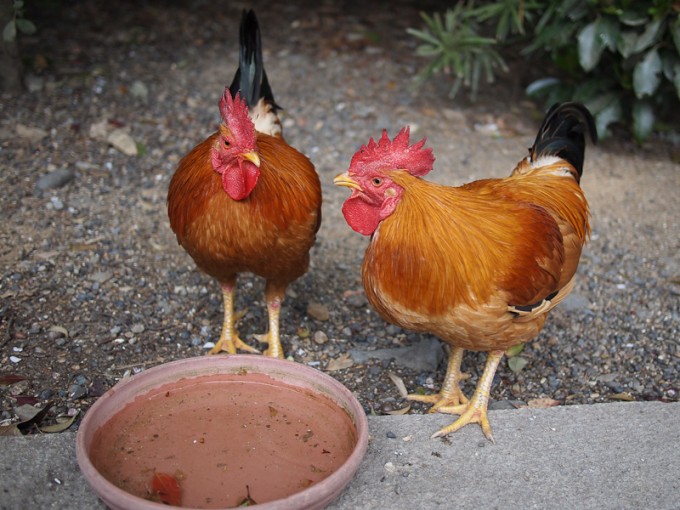
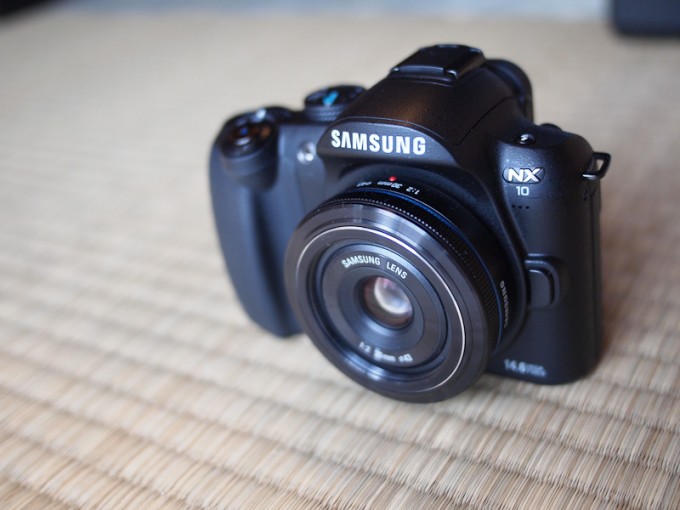
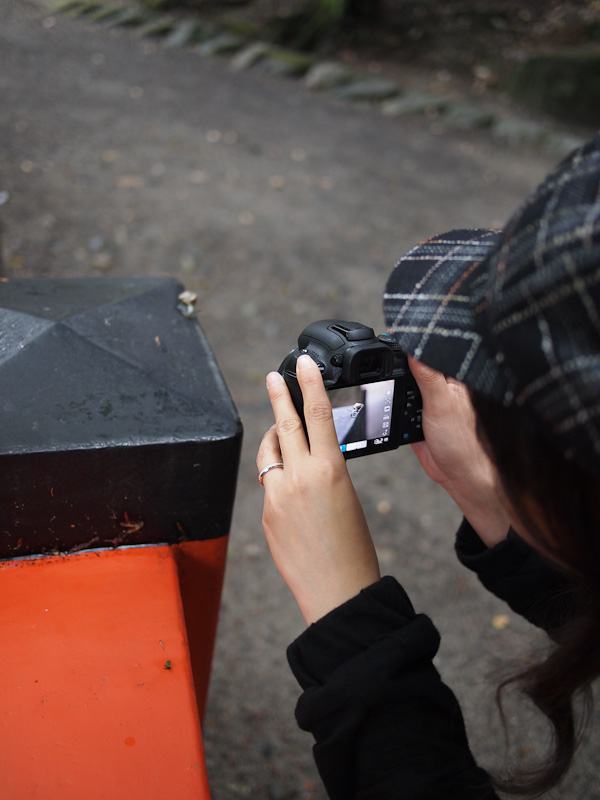
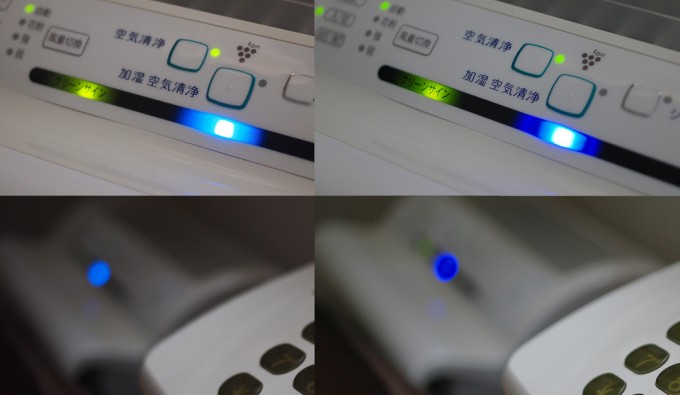
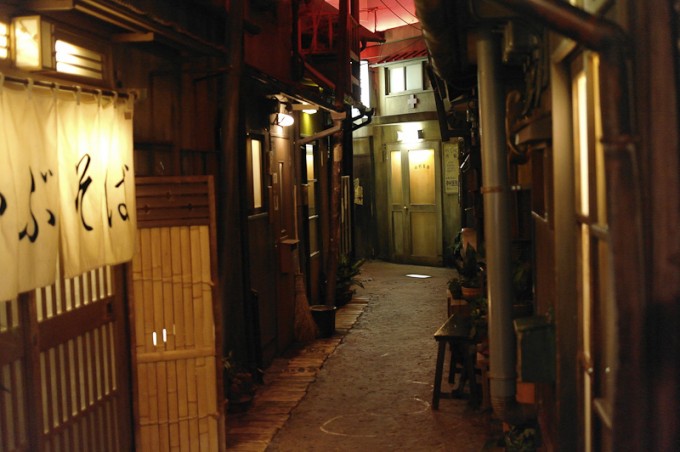
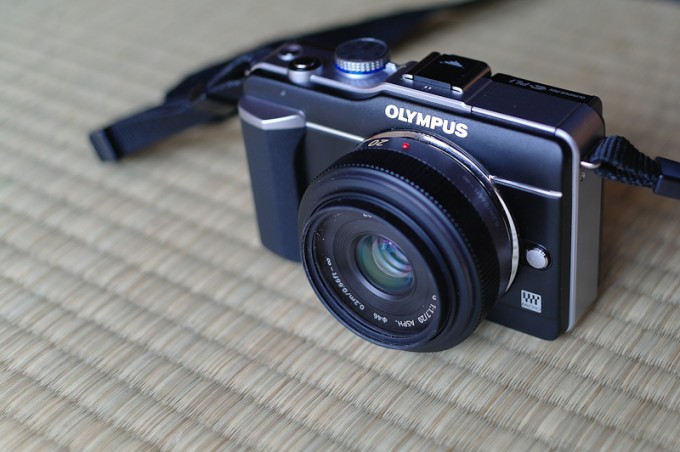
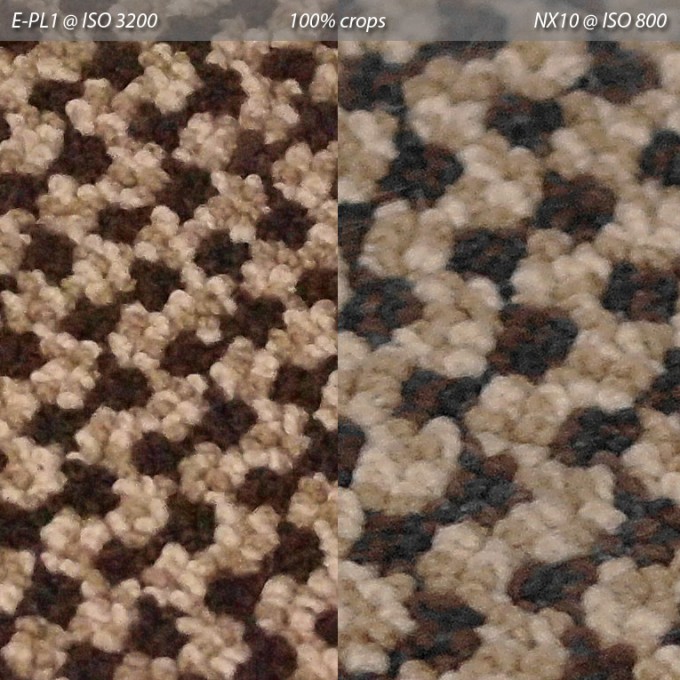
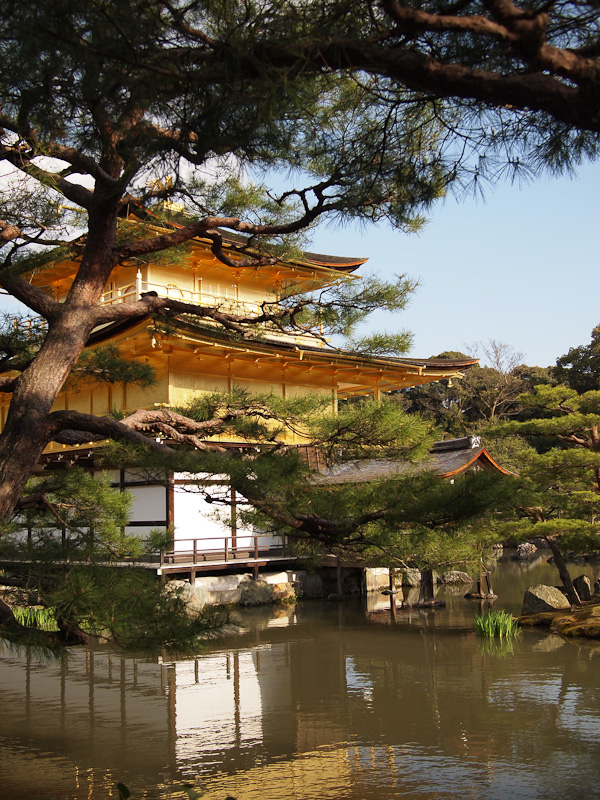

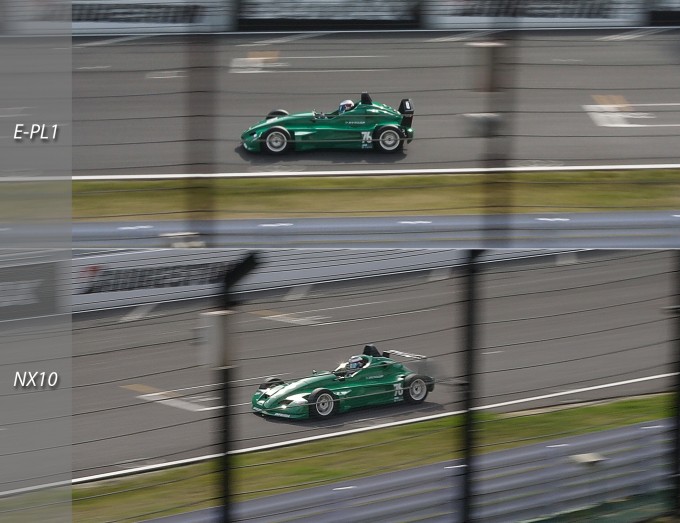
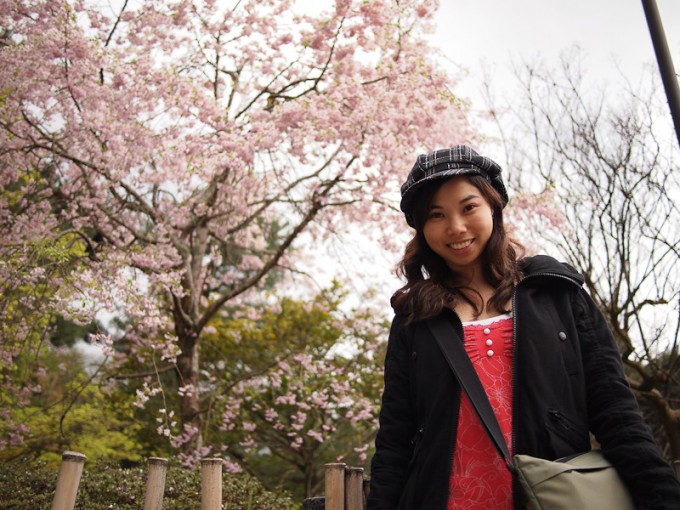
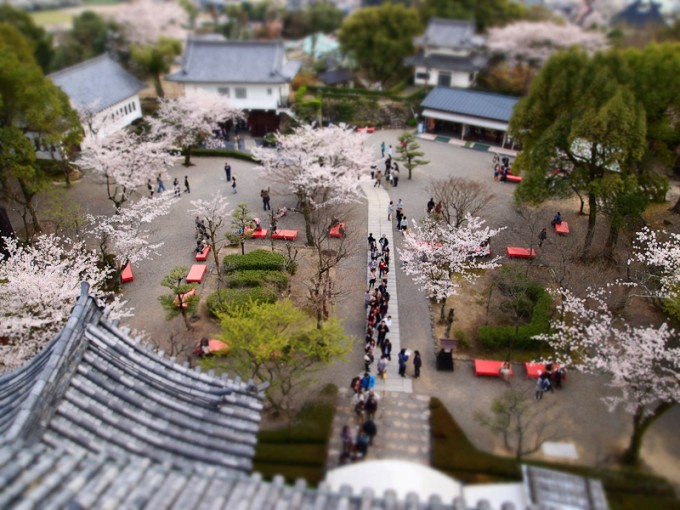
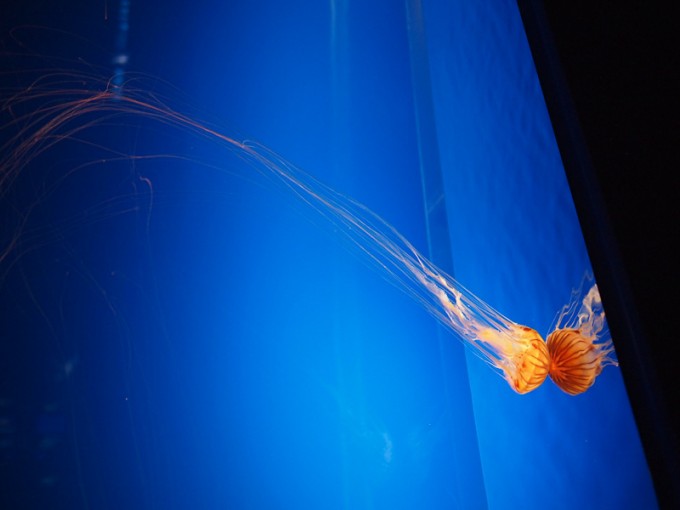
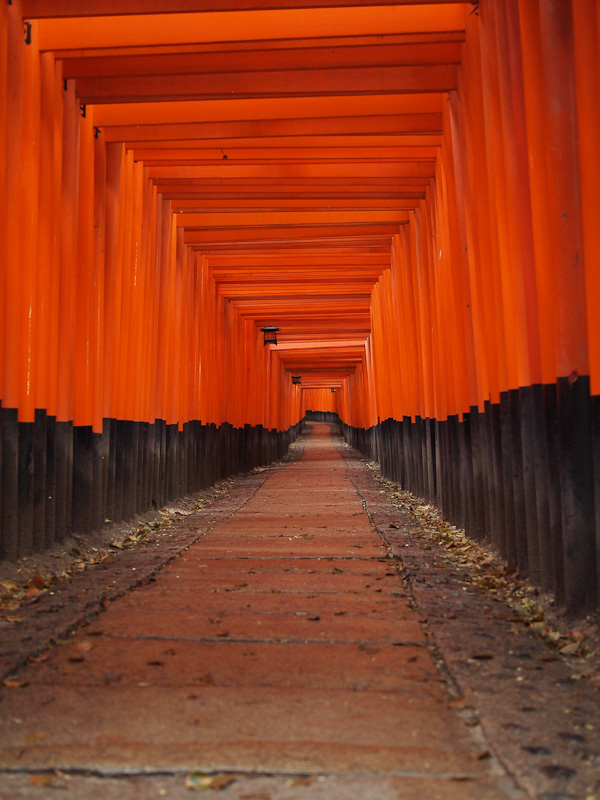

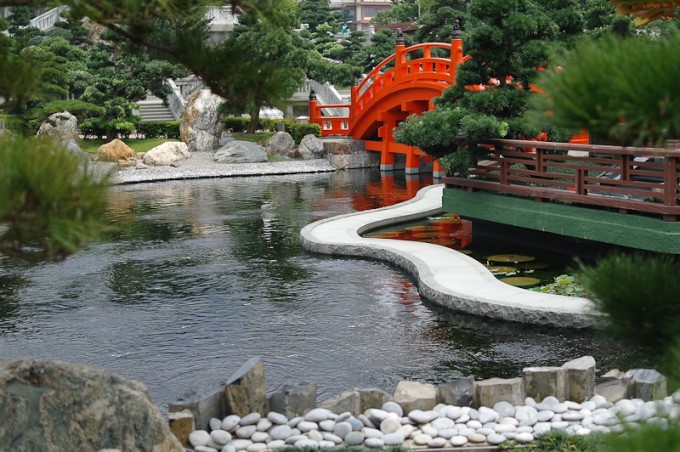
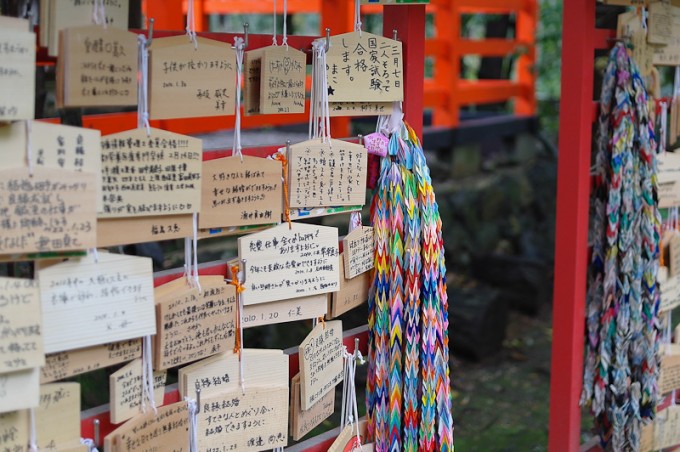
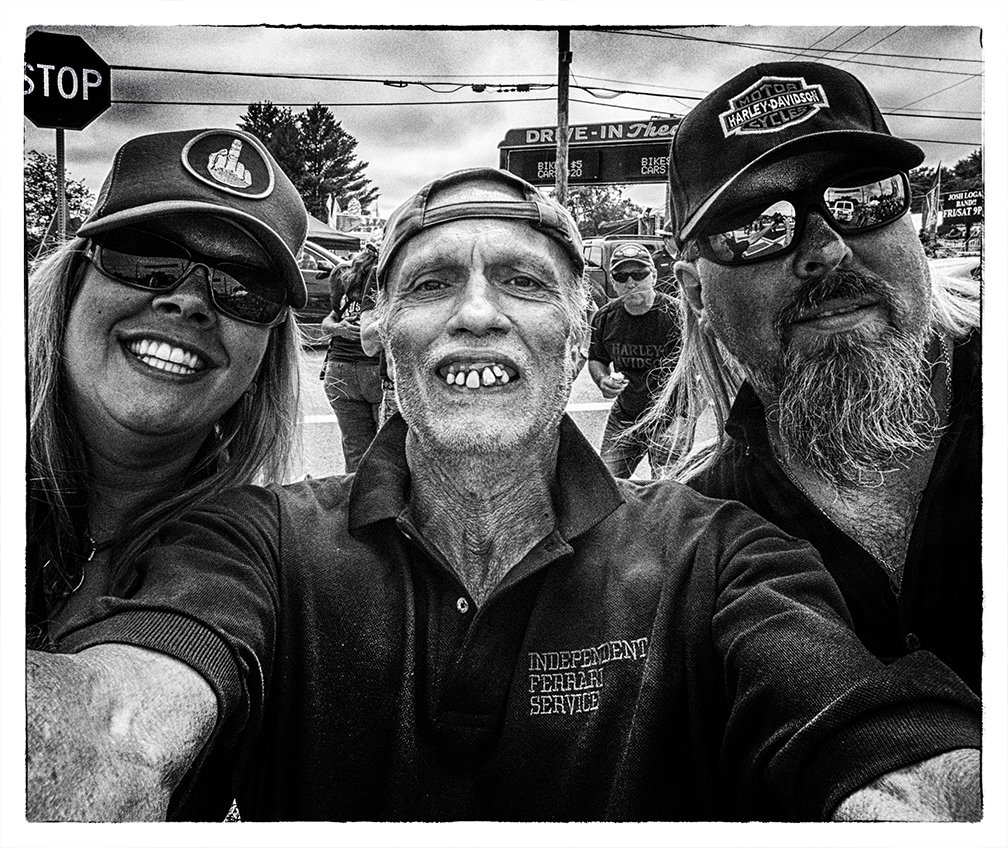

The photos of the temple tell em that olympus colors are wrm and dirty, the pond has brown tones which makes it look like a mud pool, and the warm browns creep into every part of the phtoto as well, where as the Samsung colors look more clean and fresh , at least the greens and green blues look like greens and not laced with brown like the olympus photo.
btw, it’s for the E-PL1 which is on the way. My Panasonic GF-3 w kit lens is for sale.
I am on the fence about the Panny 20mm. But I have a feeling it won’t be for long b/c of your excellent article Jonathan. I’ve read it doesn’t have great DOF. I guess I’ll try to achieve that w another, manual 50mm 1.7 lens? Do you have another lens to recommend? (something inexpensive like the Canon 50mm 1.8?) Thanks.
If you mean shallowness of DOF (i.e. blurry backgrounds) you’ll be pleasantly surprised, at least for short to medium distances. A lens with a bigger aperture (e.g. 50/1.7) will have more bokeh but at a different focal length, so it can’t really be compared as the situations they will be used in will be quite different.
Thank you so much for this review. I am making a step up from a compact camera and was torn between the two. I was leaning more towards the e-pl 1 but you have confirmed it for me.
Hi,
We did the same job… you bought many more cam then me, anyway!
Months that I’m loitering around in new “compact big sensor interchangeable lens market”…and I was funnily surprised how much our conclusions are nowadays the same… there is really no clue in big lens with a little body… nex series by sony is the most clear sign of it… big lens killed portability… so nomore reasons for a 4/3 micro or whatever…much better an alpha class, for example… I.e. lens must be not too big… i.e. image stabilization must be built in the body. Actually this means Olympus pen or Ricoh Gxr (talking about big sensor and little cam). But Olympus till E-pl1 was with no flash… that sometimes it’s really useful. Just logic, isn’t it? At least in the not mature, still limping new world of Evil cam.
I was wondering, neverthless, about the prime lens foveon “dp2s” 41mm Sigma… Shall it be prone to shacky blurred photos (No I.S.)? Or the fixed brilliant lens will it help often? Anyone has an opinion?
If not I will go for E-pl1 as suggested by you… even if I’m a bit scared by interface and absence of dedicated button…
Thanks a lot anyway for posting such a wide review, always a pleasure to mee smart people. The rest is just marketing 😉
Any system has its drawbacks but what is crucial for me when it comes to these mirrorless cameras are the lenses and the price point. I think the Olympus ep2 is a better camera than the Samsung nx10 but what I like about the Samsung is their lens line. Their 30mm lens had a better review than sonys equivalent and just today I saw the new Samsung 20mm pancake. I also read that Samsung is scheduled to release a 16mm pancake lens as well. Price of the 30mm and 20mm lens is 350-400 usd. Olympus and Panny still have only one pancake lens. Another thing to consider is the prices of Oly and Panny lenses.
I’m not interested in paying 700-1300 for one of their zoom lenses..dont care how good it is. When you make small cameras the logical step is to make compact lenses for it, otherwise..whats the point? Samsung nx10 and nx100 cameras may not be the best cameras in this sector but for the price point, the lens line direction, i think Samsung should be given some real praise. And for users who like to use legacy lenses, the 1.5x crop factor of a Samsung is a hell of a lot better the 2x Oly and Panny sensors.As a whole the ep2 is better than Samsungs nx10 but for me, the crucial factor has always been the small lenses.Samsung has 2 pancake lenses out now and a third comming very soon. Oly and Panny have been out for so much longer and they still just have one.I geuss they’re busy making expensive zooms for users who’d rather spend that money on zooms for dslrs instead.I dont see alot of ppl using ep2’s with a1300 dollar zoom on it. All their hype on the 4/3 sensor but Nikon, Canon..no one fell for it.It’s still a smaller sensor no matter how you slice it. This is their Achilles heel.Once FF sensors become cheaper someday to the point they will be on entry level dslr’s, who will buy m4/3’s cameras with their 2x crop factor sensors?
Hi Jonathan,
Thanks for the fun yet informative article..
I m considering e-pl1 as the side-kick to my M9. It’s also because of the wonderful panny 20/1.7 and the new voigtlander 25mm f0.95 (imagine a noctilux-wannabe at great price)…
Have you seen any review/used the voigtlander lens? How was it?
Cheers
I have not personally used the 25/0.95, however from reviews online it seems very similar to the Voigtlander 50/1.1 which I do own (attached to my E-PL1 via a Voigtlander adapter.) By similar I mean it is very soft wide open, and sharpens up around f/1.4-f/2.0.
There is no rational reason to purchase the 25/0.95 over the Panasonic-Leica 25/1.4, which is the same size, roughly same price, but much sharper and not to mention, has autofocus. I love the direct MF of the Voigtlander lenses, but at the end of the day, MF is still MF.
That said, we do not live in a rational world 🙂 F/0.95 holds a certain emotive attraction that you would surely understand as an M9 owner. If curiosity does take a strong hold, just make sure you get the VF-2 viewfinder, as I found the 50/1.1 impossible to focus accurately and quickly without it.
Hi Jonathan
Should I purchase the Panasonic 20 pancake or the Olympus 17 lens with the E-Pl1? I’m still mulling it over. I need a lens for grab and go coupled with low light shooting capabilities.
The 17/2.8 is a fine lens (according to Steve) and may be cheaper if you can find it in a kit with the E-PL1, but the 20/1.7 is the lens you want at the end of the day… literally! In low light, the 20/1.7 will still be shooting at about ISO640 when the 17/2.8 hits ISO1600. Also, your background blur (“bokeh”) will be twice as blurred, helping your subjects “pop” more.
Taking a high ISO for NX10, you should use 10 megapixels instead of 14.6 megapixels. You will be surprise the outstanding image quality.
Although just a point and shoot, the Samsung EX1/TL500 corrects most ofthe weaknesses of the NX 10
Like Jonathan I purchased the E-PL1 and the Panasonic f1.7 20mm pancake. It’s a bit under two weeks since then, and I really enjoy this combination of lens and camera. (For those who haven’t had the Panny lens in your hands, think of it as more of a “fat biscuit” than a ‘pancake.’ Surprised me when I first saw it in person.)
Had a concert to catch some relatively low light pics for. Purchased this combo for low light and stabilization. I was playing, my daughter would be shooting.
I set the camera up for aperture priority, and ditched the “face recognition.” (That is one annoying “feature.”) Set instead for single auto-focus and center of the frame is the focal point. Trained my daughter to “half-press to grab your focal person, then pan to get the whole shot you want.”
She sat behind some DSLR guys with tripods and big honkin’ zooms. Camera fit her perfectly. I may give it to her someday, but for now I love it too much, heh!
Results here: http://www.flickr.com/photos/11489481@N04/sets/72157624037012664/
Not a single blown shot. As you can see, great colors. The detail: good enough to do post zooms on.
And on the next day:
http://www.flickr.com/photos/11489481@N04/sets/72157623907748397/
On the first two shots, I forgot I had aperture set to f1.7 from the night before. But, that made fore some cool “art” shots. The rest speak for themselves.
I love this camera!
Had a bit of a scare this afternoon – bright sun, good photo op. Got home, all my shots were blue! Crud, have to take it back to the shop? Eh, no. Somehow in learning to fiddle with the modes earlier, I had left the darned thing in “incandescent light” mode. I think I’ll stick to “Automatic” for the color balance from here out. ;^)
That’s my one peeve – The modes don’t feel … intuitive to me at all. I’ve found a mode that does give me most of the info I need on one screen, so I’ll be trying that out for a while.
By the way, the Panny pancake in “low-ish” light gives just as sharp “post” zoom (i.e., zoomed in by cropping the image in post processing) as the kit lens does zoomed up all the way. In decent light, of course the kit lens out “zooms” the pancake for sharpness, but not by as much as you’d guess. That pancake is one heck of a lens.
BTW… Thanks for your reply Jonathan.
Your article generated so many responses that I didn’t realise that you had responded o a new page.
Having enjoyed your review so much, am hoping that you can do the same comparing the new Sonys with the mirrorless competition.
Well, this was pretty much zapped by the introduction of the new SONYs.
Samsung was always going to be a bit player at best (though I have always been a fan of their TVs). Remember they publicly stated they expected 20% of the interchangeable lens market!
Olympus was always going to be held back by a smaller sensor (though I LOVE their F2.0 zooms)
Sony loses a bit by having IS in-lens. But they win a lot by having a miniscule camera size, EXMOR sensor, and incredible in-camera processing.
The Sony isn’t just a “camera for my wife, wink”, it’s a camera for my wife (that I will borrow).
This is a rare watershed in camera design.
Bravo Sony.
Boohoo Samsung.
Go for it Olympus.
Thanks a lot, Jonathan!
Just purchased an E-PL1 and would like some advice about what might be the best HD video focus mode. I will be taking wedding videos in comgination with stills and cannot decide what the best focus mode (i.e. CAF-t or just the CAF mode will serve me best. Can’t really tell which focus mode is results in the best continous focus. Any adivce?
Fred 9: woops, my typo. I meant the E-PL1’s ISO 1600 rivals my D90’s ISO 3200 🙂 I just pixel-peeped some photos in Lightroom to confirm. That said, the E-PL1’s ISO 3200 is very “pleasant,” looking more like film grain than random splotchiness like on the D90 and to a much greater extent, the NX10. It’s also very noise-ninja-friendly noise 🙂
I also like how the E-PL1 retains good colour and contrast at high ISO, something my D90 wasn’t the best at. This is one of the pictures I gave Steve for the review, he obviously thought it was nothing special and didn’t realise it was taken at ISO 3200:
[img]http://temp.jw.id.au/shpjw4.jpg[/img]
Hi Jonathan,
On mu-43.com you say:
“the iso3200 image quality on the epl1 rivals the iso1600 quality on my nikon d90”
Really? The Sony sensor used in the D90/D5000/K-x is pretty much universally hailed as having the best high ISO performance of any APS-C sensor, let alone M4/3.
If the E-PL1 is really that amazing that it can beat a D90 by a full stop, then I might have to take a look at “getting my wife one” 😉
I totally agree with your later comment on ISO not being a creative tool. On my Pentaxes I have simply set an upper limit and the camera uses the lowest ISO it can under the prevailing lighting conditions. If I need a high shutter speed, then I switch from Av to Tv.
> HappyCamper
I should have qualified that… Pentax outsold all their competitors combined in the late 60’s. Not throughout the SLR era. Even after that Pentax were still a huge player with over 3,000,000 K1000s being sold.
Excerpt:
“In 1966 Asahi Optical had produced one million SLR cameras since the first Asahiflex of 1952. It took them only another three years, until 1969, to reach two million. This period was a time of complete pre-eminence for Asahi Optical. During the Spotmatic era Asahi were manufacturing more SLRs per month than all the other camera manufacturers combined.”
If you see pictures of the Beatles holding cameras, my guess is that they’ll be Pentax.
Kirilius,
For general travel photos I would definitely recommend the E-PL1 with the 14-42mm kit zoom lens. It’s MUCH more compact than the NX10 + 18-55 and has more than enough dynamic range and resolution for everyday needs. When you do decide you want something faster and sharper, you can upgrade to either the 17/2.8 Olympus pancake or the 20/1.7 Panasonic pancake – both of these will give you a field of view wide enough to capture the unexpected (I found the Samsung 30/2 to be too restrictive when exploring new areas.)
For toddlers running around the house, definitely the E-PL1 because it has AF tracking – something the NX10 lacks. It works much faster than the constant AF mode on both cameras, and helps you nail that shot when your kid just won’t stay still 🙂
“in the film SLR days, Pentax sold more cameras than Canon/Nikon/Olympus combined”
…do you have any numbers on that? I highly doubt it. The Canon AE1 ALONE sold more than 5 million units.
Thank you again Jonatahn, I’d appreciate if you can give me an advice for my dilemma since I am trying to decide between E-PL1 and NX10.
The type of pictures I usually make are:
1. Nature landscapes and general travel photos (for these I need good dynamic range, better resolution and focal length versatility)
2. Pictures of my toddler playing and running around the house (better low-light performance, fast AF, focus tracking)
Which one do you think would be better in my case?
In response to the comment about using the smaller version of the DSLR versus finding a 4/3, etc. I personally prefer to get a small camera that is a point and shoot. Not a huge DSLR that is almost the size of a point and shoot, more interchangeable lenses, etc. I want something compact and cute. It’s a different realm.
I’m looking forward to a hands-free camera, that will go out and take my photos for me…
OK, mirrorless may be the most important segment for 5 years.
Lenticular lens design and 100MP, ISO 200,000+ sensors might consign all of our glass to historical trinket status sooner rather than later.
With a combination of optical and digital zoom, expect a S90-sized compact with built in 20-500mm lenticular lens, IS, F2 to F4, and usable ISO 100,000+ in less than 10 years. All with processing ability to correct for distortion, noise, CA on the fly at 10 fps.
Lenticular lenses, electronic shutters, and processing power are going to transform photography.
Nice review! A Commensurate amount of comments too!
My take on mirrorless cameras is simple; they need to be smaller than DSLRs and better than PnSs.
Any manufacturer that doesn’t put image stabilization in the body FAILS. Simple.
After that, it’s up to them to fight it out with 4/3, APS-C, ISO noise, focus speed, handling, etc, etc.
This is going to be a VERY interesting segment to watch. Will Canon and Nikon continue with lens-stabilization? If they do, they’re in trouble.
Sony are quite a good bet, but not exactly small lens experts (Zeiss included).
Olympus are in the best position here. Great glass, great IQ, but a 4/3 sensor will always be playing catch up to APS-C.
The dark horse is Pentax.
In body stabilization: Check
Kings of small glass: Check
APS-C with class-leading ISO: Check (Sony sensor, Pentax software)
Reducing camera dimension skills: Check
Short story, Pentax make the smallest APS-C cameras, they make the smallest lenses (with fantastic image quality), they have the best high ISO / detail of any APS-C maker, and they have in-camera image stabilization.
I’ve repeated myself because this is very important. Mirrorless will be the fastest growing and most profitable segment for camera makers for the next 10 years. If Hoya provide adequate funds, Pentax is positioned to be the leader here (in the film SLR days, Pentax sold more cameras than Canon/Nikon/Olympus combined).
As Jonathan said, the winners are us.
I
Let me show you what I did using NX10, unfortunately I dno’t have ever DSLR or *4/3 so can’t compare personally.
Of course, this is not a perfect camera, but the average or advanced user would be satisfactory.
Especially if it is with 30mm
I invite you to my flickr:
http://www.flickr.com/photos/didmyself/
[img]http://farm4.static.flickr.com/3322/4584342219_f59da75078_m.jpg[/img]
[img]http://farm4.static.flickr.com/3645/4566220289_bb72077955_m.jpg[/img]
[img]http://farm4.static.flickr.com/3425/4566820464_ae577126d5_m.jpg[/img]
Well said Jim – IS/VR/VC/OS is absolutely no replacement for poor technique, and at best works only for stationary subjects anyway. However, for me it’s a perfect feature to complement the way I like to shoot m43 cameras – one-handed 🙂
Not to keep disputing your findings, Jonathan, but I get very good results using the GF-1 with an assortment of lenses that don’t have “IS”. The one lens I do have that has it…the 14-45…I hardly ever use this feature. Since you had 71% of your GF-1 images come out fine…you or the camera, or both, were doing something right most of the time.
I just happen to think that “IS” as a feature is way overblown. Not to say that it hasn’t helped you, but I want to caution readers here that think if they buy an EPL-1, that the built-in “IS” is going to be a savior to their poor technique.
As I said, this is a good comparison of these new cameras and I appreciate your effort in presenting your experiences here. I just don’t agree with them.
steve: of the E-P1 and E-PL1, I would take the latter. When I was shopping, both were close enough in price however I really wanted the E-PL1’s high ISO performance. This and it’s a bit smaller and lighter and has a built-in flash you can even bounce off ceilings in some situations (see youtube for this trick.) The E-P1 on the other hand has a faster max shutter speed and dedicated adjustment dials, so you have to weigh up what’s important for you. Note that the E-P1 doesn’t have a port for the EVF, so if you plan on going down that path (especially for legacy lenses) then the E-PL1 would be a better choice IMO.
Kirilius: yes, this was mentioned in the addendum of the review. The E-PL1’s AF speed goes up noticeably to a point where there’s no meaningful difference between the two cameras – it’s quite an important update. However it’s still noticeably behind the Panasonic G1 and GF1. I tested with the Olympus 14-42 and Panasonic 20/1.7 and both lenses got nice improvements.
Thanks for the review, Jonathan! I am trying to decide between E-PL1 and NX10 at the moment and this article was a good source of information. One question though:
Have you tried the E-PL1 with the latest firmware? It is supposed to improve the AF speed and reportedly bring it to the level of that of G1′ AF.
If you tried it, how does the AF compare now to that of NX10? What lenses did you use?
Thank you!
Jonathan,
Great review. I’m a GF1 + 20mm user and even though I have gotten some great results from low light and night photography, I’m still debating weather to move over to Olympus Pen to get “higher %” of sharp images achievable with IS built in? Your article really cleared up some answers for me but what’s your impression of EP1 vs EPL1? Especially when used with 20mm Panny lens. It seems price wise these two would be better for comparison.
thanks!
To Stevie,
“The NX10 will give you more DOF control than a micro four thirds camera.”
The difference between APS & 4/3 for DOF control is very small. You don’t really see it until Full Frame like the 5D.
DpReview also noted the tendency for blown highlights.
To Jonathan
“The NX10 will give you more DOF control than a micro four thirds camera.”
Wouldnt that “not so minor point” belong in a balanced review in the first place?
“The blown highlights cannot be solved simply by underexposing – it is not a brightness issue. There is something wrong with the way the NX10 ’sees’ coloured lights and I hope it can be fixed via a firmware update.”
I hardly take pictures of LEDs in darkness indoors so I dont see an issue here. Anyway, have you tried checking the RAW files? Have you tried different camera settings (saturation?). The samples you posted to illustrate the problem dont have anything to do with regular photography as far as I can tell.
Nice work ! Good review using the settings for the less experienced.
M4/3 is a really a multi-usage format … point-and-shoot upgrade, backup camera, travel camera …
And I agree with Steve that the E-PL1 is one heck of a jpeg camera.
But the true power of the E-PL1 comes when one adds in the EVF, to shoot high-quality manual focus lenses that even Canon 5D users love. Leica-R, Zeiss CY, Leica-M, Minolta, etc. It’s not all about sharpness, character is what an artist would prefer.
Of course, it makes it heavier, but this is for advanced usage and users, who can focus manually like second nature.
Quality against M9 ? Doesn’t matter after properly post-processing to show art rather than sharpness. To quote foremost Leica user Bresson – “sharpness is a bourgeois concept”, even his pics aren’t sharp when blown up, from all his zone or hyperfocal focusing. He may be right too, as only bourgeoisie can afford a sharp Leica ASPH lens :). Anyway, I would agree that E-PL1 is a poor man’s Leica, and more, as one can use more lens mounts than on a Leica.
Stevie: depth of field is more a function of the aperture than the sensor size; but yes for the same f stop numbers and the same field of view, the NX10 will give you more DOF control than a micro four thirds camera. This is also one of the main reasons I decided to sell the E-P1 and give the NX10 a shot!
The blown highlights cannot be solved simply by underexposing – it is not a brightness issue. There is something wrong with the way the NX10 ‘sees’ coloured lights and I hope it can be fixed via a firmware update.
No so fast!
The larger sensor of the NX10 means less depth of field when you need it. I can deal with blown highlights (simply generally underexpose a bit, like i HAVE TO DO with my GF1) but I cant do anything about sensor physics.
Here´s another comparison. The pics speak for themselves.
http://unwire.hk/2010/03/22/gf1-vs-ep2-vs-nx10/
Thanks Jonathan for your answer and the initial review, very informative and entertaining too.
Jonathan, thanks for the great and informative write-up.
I just acquired an E-P2 with 1.7/20 and EVF; great combo and slips into the hand and pocket a lot easier (of course) than my D700 with Zeiss glass. I decided on the E-P2 over the E-PL1 because of its better shutterspeed range, and because with the lens and the EVF (I didn’t want the zoom as I find it too bulky for such a small camera) the price difference was negligible. IQ and ISO range are really great, and the firmware update cured the autofocus (lack of) speed.
The D700 on the other hand…
Elaine: you need the Olympus adapter MF-2 (the MF-1 allows you to fit standard 4/3 rd lenses onto micro 4/3), it’s readily available and costs about £150 over here. It’s about an inch deep so the camera becomes quite chunky.
Thanks for the link Jim, I actually happened across that same article last week.
In the context of the E-P1 and E-PL1, the readers can be assured that it is safe to leave the IS on 99% of the time, and that there is no noticeable degradation in image quality.
With different systems though there will undoubtedly be different results. The only problem I have personally had is with the Tamron 18-270mm VC (vibration compensation) – some shots I did on a tripod were very so slightly soft, and that was corrected by flipping the VC off.
It’s highly probable that the problem is most pronounced at the tele end. I’ll have to find myself a suitable tele and see how well the E-PL1’s “IS focal length” setting compensates.
To clarify, the above link deals specifically with Nikon’s VR…but I think it’s reasonable to assume that the others work on the same principles.
Anyway, thanks for the info on the Samsung…I was wondering about that camera.
Here’s a good article on the perils of “IS” or “VR”:
http://www.bythom.com/nikon-vr.htm
Jonathan, I can get my D90 to show as vivid of a colour that I want on the display, but all that goes away when you import the raws. The most saturated look I could ever get out of camera was from a LX3, boost that thing to max and shoot jpgs, its quite funny, and sometimes pretty darn awesome. BTW the lx3 is a awesome camera as well.
Thanks for the insights Jim. In 99% of situations the E-PL1’s IS does not degrade images at all, this I have verified myself. One instance where it was harmful though was the race circuit pictured above – notice the ‘jagged’ white lines on the near guardrail in the E-PL1 shot. That was a result of me leaving vertical IS on since I thought it would be a simple panning shot, but there was actually a slight angle to it.
Re the GF1 – correct, it’s not the camera’s fault. It’s my fault for not being able to hand-hold the camera steady at 1/15-1/30 shutter speed 100% of the time. I did get 71% sharp photos with it though 🙂 Ultimately I decided I need a camera that can grab a sharp shot 99% of the time and the GF1 was clearly not the one for me.
You do realize that using IS or VR… or whatever you want to call it…can actually degrade your images. People get in the habit of leaving IS enabled all the time. And that’s what ruins their shots. If you weren’t getting sharp images with the GF-1 and the 20/1.7 it wasn’t the camera’s fault.
Elaine: the E-PL1 has 6 filters compared to the E-P2’s 8. It loses the E-P2’s “Cross Process”, “Pale & Light Colour” and “Light Tone” filters, but gains a “Gentle Sepia” filter.
My favourites are Diorama and Pinhole, which both cameras have!
Also, Does the Olympus EPL-1 have the same filter set as the EP2? I love them.
Sheygetz: before the D90 I had the D40 and used that for quite a while. Before that I borrowed my sister’s D40x a lot (yes I got the D40 when the D40x was already out lol!)
At every camera purchase I also evaluated the SLR options as they are much cheaper. The D5000 and 550D were both tempting, but these cameras were inherently much larger than the m43 options due to simple physics (larger sensor = larger glass.) I played with the Pentax K-x about 5 times in Hong Kong but at the end of the day went home with the E-PL1.
Interestingly, when I was taking the shot above of the Golden Pavilion, I was chatting to another tourist who had a K-x. We were comparing results and no matter what settings we used, we couldn’t get as vibrant an output out of the Pentax! Of course this could just be due to the display.
Oops. I meant Samsung. I said Sony. Sorry, Sony! Well, I loved the article and the pictures. Thanks for sharing this story.
The pattern with these m4/3 “discoveries” is always similar. Someone with rather a large camera, 3kg in your case, gets tired of shlepping this load around. Enter any one m4/3 model. Strangely enough these people, who usually were CaNikon shooters before, never ever stop to consider their brand’s entry models, say a D40 or D5000 or a T2i/ 550D. These would be lighter and smaller for sure. The E-PL1 with the imho indispensable viewfinder is actually higher than the Rebel, only a centimetre less wide though of course a lot less deep. It’s also less than 200g lighter. If on the other hand you compare both to a 1Dx or 3Dx these differences become mere trifles. Meaning, you’d get most of the weight/ size benefits, but none of the focus speed, ISO handling etc problems, plus you could continue to use your glass.
I think the reason is pure psychology. For a D3s shooter to step down to an entry model would be exactly that, a step down, humbling, loosing face. But to turn up with a nifty m4/3 is more of a side-step, a statement, way more cool. I would really be interested to hear from recent “heavy metal” renegades whether they ever considered an entry model instead of an m4/3 camera.
Thanks guys for all of the feedback! And also thanks to Steve for allowing me to share my experiences with the cameras.
Armanius: there is no doubt that everyone will have a different “best camera” at different stages of their lives. My personal preference after having owned everything from tiny compacts to huge SLRs is clearly in the EVIL+pancake realm. I took 5000+ photos during this trip and if that doesn’t validate my choice, I don’t know what will! 🙂
David: Sony’s NEX3/NEX5 will be interesting, but will all depend on the lenses. The one to watch will be the 16mm f/2.8 which is a (rather fat) pancake with IS built in apparently. Regardless though it won’t have as much DOF control as the 20/1.7, but it’s way too early to make a call just yet.
Dave: very good find with that lens, I tried the Panasonic 45-200 on my E-PL1 but the image quality was not up to par (I tried all combinations of body and lens IS on/off) so legacy Olympus glass looks to be the ticket here.
Kevin: thanks for the comments, it’s my first article so I was focusing on making it “flow” as much as possible 🙂 I played with the G1 + 14-45 before I bought my E-PL1, but decided against it because I wanted to stabilise any lens I used, esp exotic ones. It’s also a bit big, but for some people that will mean better handling. If you’ll never ever use any other lens though it’s a great camera, with very fast handling.
Lucian: I used to be an all-manual shooter, and for predictable situations (e.g. product shoots) I switch the E-PL1 over to manual without a second thought. On holiday though, there are so many different things that can happen at anytime and for me, the all-round camera will let me trust its ability to choose a few parameters by itself. Saves a lot of Chimping Tourist Syndrome 🙂
Ashwin: thanks. The NX10 is an awesome first effort by Samsung but comes up a little too short and is just a little too late. The NX5 will be an interesting one to watch though! Here are a couple more nice pics from the E-PL1:
[img]http://temp.jw.id.au/shpjw1.jpg[/img]
[img]http://temp.jw.id.au/shpjw2.jpg[/img]
and a nice one my wife took with the NX10:
[img]http://temp.jw.id.au/shpjw3.jpg[/img]
Wow. I’m shocked that Sony didn’t measure up. Oh well. Score for the Oly. I’m tempted to get one. Dave SE22, I see that you can use the Olympus Zuiko lenses on it. Do you need an adapter to do this? I’m curious. I love the Zuiko lenses. I still love Nikon though. I want to get my hands on a Nikon D700 with a 24-70 zoom lens. Would be perfect for dog photography. Meanwhile, I just ran a roll through the Leica M6. I used Fuji Reala ISO 100 film, and ma very pleased that the used M6 works fine. I’m happy with the results. I still love the 4/3 system though. It’s a wonderful system. One of these days. I can see an Olympus in my future. LOL!
Lovely images, Jonathan. I do think that the EPL-1 is a great option for most individuals looking for a compact with high IQ and control of DOF. Your review, to me, suggests that moreso the Samsung NX10 has a long ways to go before it can compete…
Thanks!
Despite the dryness of my earlier comment I would like to add I enjoyed the article and your writing style Jonathan. There’s a lot of content here, it must of taken a while to write and edit… Thank you for the humour and honesty.
Theres to many negative comments on the internet these days, I just felt the need to add something positive for your efforts.. 😉
Chris – have you tried the EVF on the Olympus? I don’t think so.
While this is a great review I can’t figure out yet how people like you can stand EVFs. Pentax with small and light DA Limited prime lenses is the recipe for photographic nirvana for me. EVF = junk IMHO.
Thanks Jonathan for an interesting article. In 4/3 territory my vote goes to the Panasonic GF1 with the 20/1.7 lens – it’s a shame lack of IS made you give it up.
I really think if you want a camera to do something or are after a certain effect then that’s what manual settings are for – rejecting a camera because it won’t do automatically what you could easily do manually is a bit odd.
I agree with the spirit of your conclusion – as the day becomes night you’d like your perfect daylight camera to morph into your perfect low light camera … that’s the way I justify to anyone who asks why I own several different cameras – i need one for every situation, a bit like needing a different outfit to suit the weather and the occasion. Keep up the good work. cheers.
I think someone needs to revisit the Panasonic G1 with image stabilized 14-45mm….
I never really wanted to like Olympus, seriously I didn’t. Keeping my Nikon DSLR just makes more sense, but darn if these little cameras don’t win out over what your head may be telling you. Nearly any DSLR has better technical specs, yet if I’m heading out the door I seldom grab mine any more. The things that cause me to keep a foot in the DSLR waters are issues with high ISO banding and not being able to keep a sustained shooting (4 fps for up to 30-40 seconds) as I do when taking stop motion sequences. Other than that my enthusiast needs a pretty much met with the E-P1, E-P2, E-PL1 or the GF1. If Oly can build on the E_PL1 strengths to make an E-P2 successor that fills in a few additional gaps then Nikon may have seen the last of me.
I agree with the first part of Armanius’s reply.
I have also bought a EPL1, mainly on the strength of Steve’s review, but also a few others, and it has reignited my interest in photography – I had several OM’s some time ago, but they got stole! Which rather curtailed my enthusiasm.
However, one of the reasons for buying the EPL1 was the ability to use legacy lenses with a stabilised body – a very clever thing for Olympus to do, I think: just after buying the olly I went past a camera dealers and there was a 200 mm Zuiko F4 lens, almost unused, for not much money – and it’s fantastic on the EPL1! I’ve also got a 50 mm Zuiko F1.4 which produces great results (not sure about wide open, though).
Enough from me, thanks for the review be interested to hear how you get on.
Jonathan,
Great, entertaining review! I hope you keep writing for steve’s site. I’m particularly interested to hear what you think of the Sony EVIL camera that comes out next week.
Great review Jonathan. I too suffer from gear acquisition syndrome. Admitting it is the first step on the road to recovery. Except that I don’t want to recover!
In any event, being an EP2 user (who was initially upset that Oly came up w/ a m4/3 camera w/ a built-in flash just a few months after I bought the EP2), I am pleased to see that the EPL1 did so well in your testing. Although I believe that the best camera is the camera that serves the purpose sought by the end user, I admit that it always feels good to read a good review about gear that I own (or sort of own given that the EP2 is fairly similar to the EPL1).
Thanks for the review and the samples. Very informative and well done.